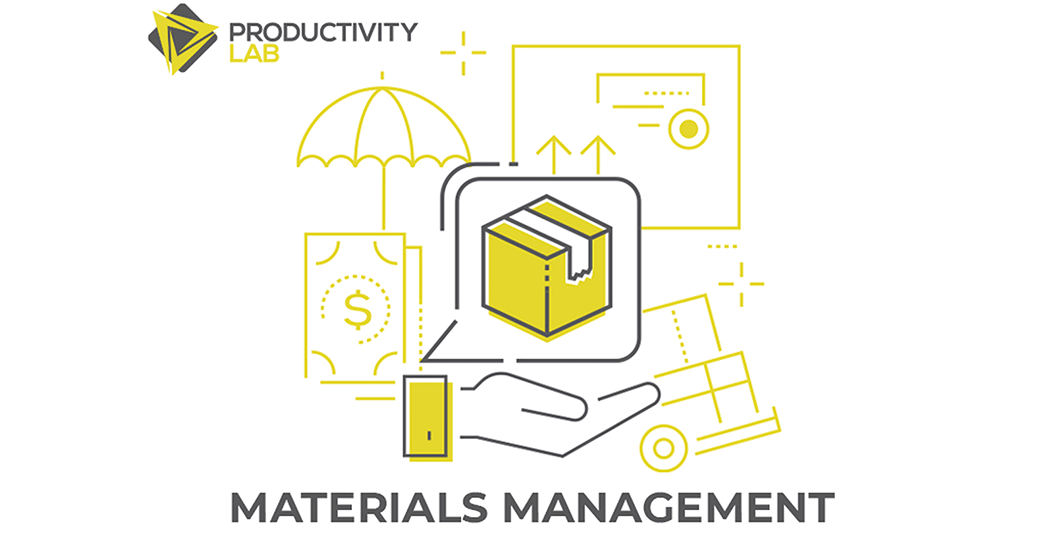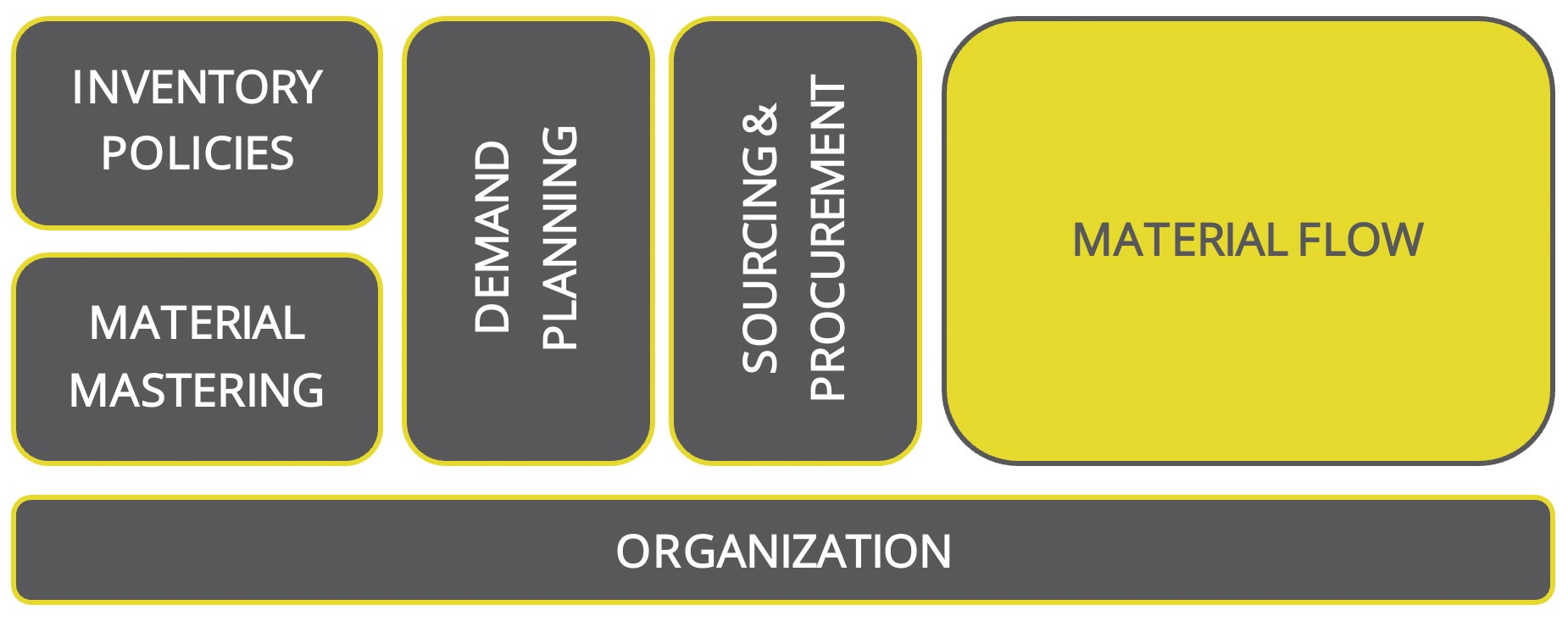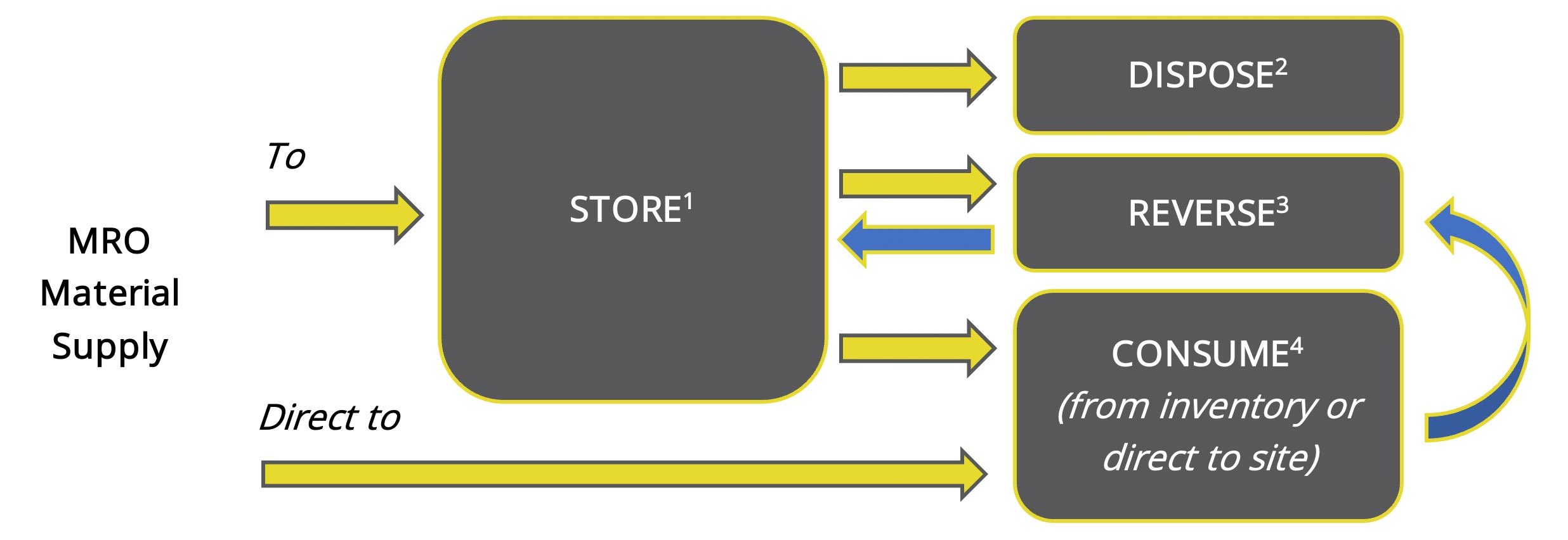
08 Dec MRO Inventory Management
Improving on inventory management for MRO materials is a complex endeavor involving a range of individually complex levers, and strategic as well as operational and tactical decisions. To mitigate this complexity, it frequently makes sense to look at individual levers, particularly the material flow activities, before attempting large-scale transformation programs to improve on inventory performance.
MRO stands for Maintenance Repair and Overhaul (or in many cases Maintenance, Repair and Operations is used). It encompasses all the activities used to keep your assets and facilities (and associated equipment) in safe and good operating conditions.
In terms of materials, MRO can be described as the materials required to perform maintenance, repairs, and overhauls on an organization’s assets or equipment, but that do not form part of that asset or equipment, and there are typically 4 categories of MRO materials:
- Production equipment maintenance and repair
- Material handling equipment maintenance and repair
- Tools and consumables
- Infrastructure maintenance and repairs
MRO materials are not always given the attention they deserve, and there are some serious consequences of not managing MRO material inventories:
| Effect | Description |
|---|---|
| Stock-outs |
|
| Overstocking / Excess Inventory Levels |
|
| Productivity Losses |
|
| Management system |
|
| Waste of Money |
|
Figure 1: Effects of lack of management of MRO inventory
Maintenance, Repair and Operations (MRO) inventory management includes a range of activities and enablers, depending on the definition, with the broadest definitions typically including:
- Material mastering (based on Bills of Materials)
- Demand planning
- Inventory Policies
- Sourcing & Procurement, including demand generation
- Storage, including receipting and issuing
- Disposals
- Reverse logistics of useful excess, obsolete and / or dead stock
- Organization structure
- Technology
- Management Control System (MCS)
These 10 activities and enablers can be shown schematically as in Figure 2 below, lumping activities number 5 – 7 into ‘Material Flow’ and enablers number 8 – 10 into ‘Organization’:
 Figure 2: MRO inventory management schematic
Figure 2: MRO inventory management schematic
Considering, the 10 inventory management activities and enablers above, material mastering, MRO demand planning, inventory policies and sourcing & procurement are all significant topics in themselves, and won’t be discussed in this article. Common for these 4 activities is that to improve on each of them individually in a given context (i.e., given organization as per Figure 2.) is a high-effort, high-impact project and realizing the full improvement potential from one activity often implies the need to improve on some aspects of the other activities.
This is not to say that organizations should not strive to improve the quality of material mastering, demand planning, inventory policies and efficiency of sourcing and procurement, they should, as the ceiling for optimal inventory management, no matter what metric is used to define ‘optimal’, is set by the combination of all the 10 identified activities and enablers. However, organizations often get caught up in these large-scale transformation projects and forget about the inherent opportunities in the tactical execution of the basic material flow processes.
Expanding on the ‘Material flow’ block from Figure 2, the material flow from delivery (to warehouse or direct to site) to termination of the flow by either consumption, disposal, or a reverse logistics transaction, is shown below in Figure 3. Pay attention to the definitions in the footnote, as they might be different from other definitions out there. Figure 3 excludes preservation and rentals (tools and equipment) for simplicity, although they could easily be included as separate items, the former under ‘Store’ and the latter as a separate in-flow and out-flow.

1 Includes central storages / warehouses as well as satellite warehouses on sites, although some MRO materials have preservation requirements, these are not covered in this article
2 In this context, disposals refer to the scrapping of material and writing the value (if any) off from inventory, typically for aged materials or materials having poor condition
3 In this context, reverse logistics refers to any transaction in which the material re-enters the supply chain, irrelevant of whether there is a financial exchange, included is the return of excess materials from work orders (blue arrows) and sale of excess and / or obsolete materials back to manufacturer
4 Material used either in completing a work order or as part of day-to-day operations
Figure 3: Material flow model (preservation and rentals are excluded for simplicity)
Comparing Figure 3 to the broad definition activities and enablers from above, the remaining ones, given an existing organization with existing organization structure and technology, are:
- Storage, including receipting and issuing
- Disposals
- Reverse logistics of useful excess, obsolete and / or dead stock
Focusing on the above 3 material flow activities will allow an organization to maximize effectiveness and efficiency at the tactical levels of inventory management, irrespective of quality of demand planning and efficiency of sourcing and procurement. An additional benefit is that once the material flow activities perform the way they should, the challenges and / or variances in performance can be used to drive continuous improvement activities across the entire spectrum of inventory management activities.
Most of the activities in the material flow model shown in Figure 3 are on the tactical level, meaning that if the policies are clear and have been embedded in the organization, significant improvements can be made through ensuring the required operating discipline, oversight and continuous improvement takes place.
Figure 4 below shows the basic requirements to manage the MRO material flow. Bear in mind the individual detail, particularly at the process level will depend on the type of business and chosen strategy. Also note that the ‘Management system’ enabler is required to tie all the elements together:
| Component | Description |
|---|---|
| Clear definitions |
|
| Policy |
|
| Process |
|
| Regular Training & Communications |
|
1 Responsible, Accountable, Consulted, Informed
Figure 4: Material flow management framework
There is nothing wrong with running a large transformation project on an organization’s MRO inventory management, provided there is a financial and / or operational business case to do so, but in times where financial and human resources are at a premium, at least put the material flow in order. A material flow project if executed correctly will always have a significant Return on Investment (ROI).
Alan Aastorp has built capabilities and delivered performance improvements for over 20 years, including engagements with some of the world’s largest companies, as well having professional qualifications in Supply Chain Management, Finance and HR. Alan can be reached at aastorp@productivity-lab.com.
References
Posted: 7/1/2020 (2020). What is MRO Inventory Management? | Managing Maintenance Inventory. [online] FTMaintenance CMMS. Available at: https://ftmaintenance.com/maintenance-management/what-is-mro-inventory-management/.
Productivity Lab. (2021). MRO Demand Planning. [online] Available at: https://productivity-lab.com/articles/mro-demand-planning/ [Accessed 6 Dec. 2021].


